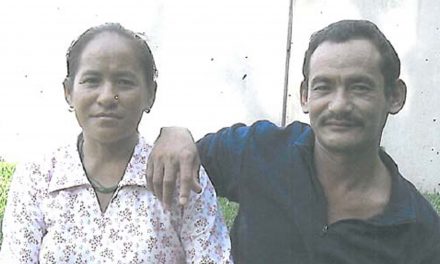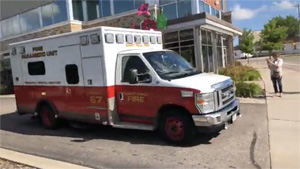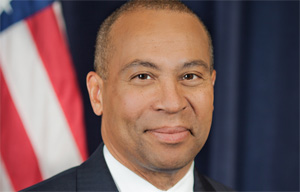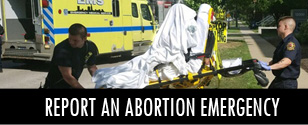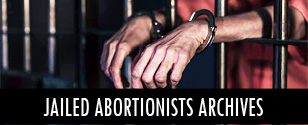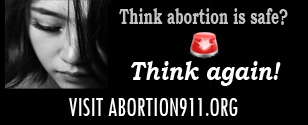– A commentary by Operation Rescue

Wichita, KS — Since the murder of late-term abortionist George Tiller by confessed killer Scott Roeder there have been efforts by their perspective supporters to paint each as a hero.
After Tiller’s death, there has been a concerted effort to shine up his image, a transformation that is a remarkable one. Prior to the shooting last May, Tiller’s official mug shot often stood as a backdrop to evening news stories concerning America’s most notorious late-term abortionist. Today we see only a “glamour shot” of an airbrushed man pictured in diffused light that lends an almost saintly quality to his portrait.
A recent report in GQ Magazine put it this way:
But George Tiller is dead, and speaking of the dead makes people careful. But also because by now the small community of people around George Tiller knew the first rule was to deny the enemy any source material.
Once they got their hands on something, they could do anything they wanted with it. They could isolate a quote like a strand of DNA and then make up a whole new organism around it. George Tiller’s friends knew that one of their jobs was to protect him, in death as in life.
And so began the remaking of the image of the man known around the world as “Tiller the Killer.”
But the reality of who George Tiller was – at least professionally – comes in the anguished stories of women and families who made the mistake of seeking out his unique services for three decades in the nondescript beige building on the corner of Kellogg and Bleckley in this isolated Midwestern community.
Tiller was no hero to those women.
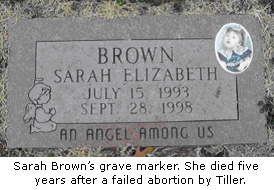
There was the adoptive family of Baby Sarah, who was delivered in the parking lot of a local hospital after Tiller botched an attempted late-term abortion in 1993. He had attempted to inject Sarah’s hear with potassium chloride to begin the abortion, but missed and injected her brain instead. Although doctors said Sarah would not survive eight weeks, under the loving care of her new family she lived for five years. Tiller’s attack on Sarah impaired her growth and left her brain damaged, blind, and unable to walk. A family member noted at her memorial service that Tiller succeeded in killing little Sarah, but it took him five years to do it.
Then there was the family of a baby girl we call “Baby Chelsea.” Having been prenatally diagnosed with cystic fibrosis, Chelsea’s young parents heeded the advice of their doctor and paid a visit to Tiller’s abortion clinic in 1998. Her tiny heart was injected with poison and Chelsea was delivered feet first. Tiller punctured the base of Chelsea’s skull and evacuated the contents. Her head collapsed and slid from the birth canal.
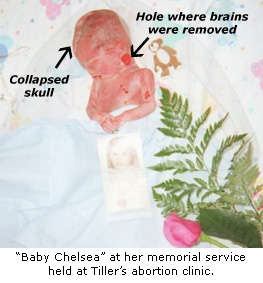
Following the abortion, George Tiller baptized Chelsea, wrapped her in a blanket, and presented her to her parents for viewing, commenting that, “Your baby was a very efficient parasite.” Tiller then snapped Polaroid photos of the parents and their dead child, which now are carefully tucked away in a photo album cherished by a regretful mother. As she held her baby’s body, fluids and blood from the incision at the base of the skull began to leak down her arm. “I felt like my life was draining down my arm,” she remarked later. The abortion of her daughter continues to haunt Chelsea’s mother today.
Christin A. Gilbert was a happy-go-lucky, loving teenager with Down Syndrome who was especially known for her enthusiastic hugs. She loved sports, having won a gold medal in her hometown Special Olympics. She served as batgirl and the inspiration behind her high school’s state championship girls’ softball team.
Tragically, Christin’s world came crashing down when she was sexually assaulted in 2004. The abuse resulted in a pregnancy that was not discovered by her family until Christin’s tummy was swollen with child. Christin was taken from her Texas home to Tiller’s Wichita clinic for a risky third-trimester abortion, which was done by one of Tiller’s hirelings, abortionist LeRoy Carhart of Nebraska who worked part-time for Tiller in Kansas.
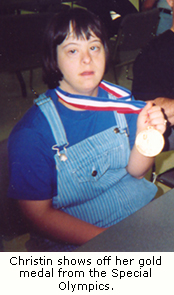
Carhart, who had a documented history of botched abortions, bungled Christin’s abortion and she died horribly as a result. Delays in calling 911 likely contributed to her death. While Tiller was not the abortionist of record, he served as the clinic’s owner and Medical Director. Responsibility for Christin’s death, in the opinion of Operation Rescue and others, rested directly on his shoulders.
Disciplinary action was sought through the Kansas State Board of Healing Arts, but was dismissed by a corrupt board run by Larry Buening, one of Tiller’s best friends. A grand jury was hampered by a district attorney’s office that misled them as to the scope of their investigatory powers. They reluctantly failed to indict.
Tiller had made a lot of money in the late-term abortion business and liked to spread it around to politicians who could protect him. His ProKanDo PAC was once the largest political action committee in Kansas. His largess earned him an invitation to the Governor’s mansion where he and his staff were entertained by then Gov. Kathleen Sebelius, who now serves as Secretary of Health and Human Services.
Meanwhile, Attorney General Phill Kline was blocked every step of the way in his investigations into abortion industry wrongdoing. Time fails us to list the events that led to the travesty of justice that occurred by the State’s failure to prosecute 30 criminal charges that were brought by Kline only to be dismissed on dubious jurisdictional grounds. (Read a time line of events for a clearer picture of the often-complex efforts to bring Tiller to justice.)
A Legislative committee considered a subpoena for Kline’s documents so that the truth about the horrific and illegal nature of Tiller’s late-term abortion business could finally see the light of day, but no subpoenas were ever issued. Six months later, an interim legislative committee convened to hold hearings about late-term abortions in Kansas. Those hearings produced little fruit.
However, during that hearing, Michelle Armesto-Berge came forward and testified of her appalling late-term abortion experience at Tiller’s in 2003, where she received an unwanted abortion after being coerced by her mother. Armesto said that because she was late for her appointment, the abortion began before she was allowed to sign her consent forms. She never saw the second physician that was required for all post-viability abortions and was shocked to learn that her 26-week old baby was falsely diagnosed as “non-viable” to avoid the second physician law, even though she and her baby were perfectly healthy.
Finally, in June, 2007, Tiller was charged with 19 misdemeanor counts of committing illegal late-term abortions without the second signature of an unaffiliated Kansas physician. Buening and his cohorts were forced to resign in disgrace from the KSBHA, and were replaced with a Board that eventually moved to revoke Tiller’s medical license.
While those cases wound their way through the legal system, Operation Rescue learned of another botched abortion patient who was willing to tell her story from her hospital bed. Patient S. sought an abortion at Tiller’s in September, 2008. It was almost the last thing she ever did.
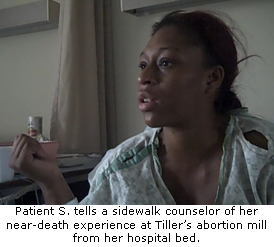
Patient S. has told of her abortion where she contracted a fever of 104 degrees and was held in a room against her will for four hours, sick and without care. Tiller attempted to send her away – even though her abortion was in progress – because she expressed displeasure with the way she was being treated. When she finally received the abortion, she suffered respiratory and cardiac arrest. She developed an infection from a dirty oxygen mask used during the medical emergency. After being revived, Patient S. was taken to the hospital in Tiller’s private vehicle and was told to keep her IV bag down so that protesters would not see it. To add to the emotional pain, Patient S. told Operation Rescue that she felt her baby move just prior to the abortion and is convinced that her baby was alive. If true, her abortion would have been illegal.
In March, 2009, Tiller was acquitted of the 19 criminal charges during a trial that took the jury less than 25 minutes to decide. But within minutes of that verdict, the Kansas State Board of Healing Arts, newly under the direction of Jack Confer, issued a statement that the Board was proceeding with eleven similar charges that could have led to the revocation of Tiller’s medical license. Confer assured the public that the KSBHA worked under a different burden of proof than the criminal courts and that the outcome of the criminal case would have no effect on the KSBHA’s case.
The timing and content of that release sent a strong message to the community that they could expect a different outcome from the KSBHA case. That message, along with indications that Tiller had taken steps to disband ProKanDo prior to his criminal trial and other intelligence gathered by Operation Rescue, led to the logical conclusion that either Tiller would soon have his license stripped by the KSBHA, or that he would retire in order to avoid the humiliation of revocation. We were cautiously optimistic that Tiller’s infamous late-term abortion mill would be closed within months – through peaceful, legal means.
Then came Scott Roeder, who acted in frustration borne out of ignorance. He was either unaware or did not understand that the KSBHA was about to act. He shot and killed Tiller on May 31, 2009, claiming that all legal avenues had been exhausted and that his action was necessary to save the lives of pre-born babies. Nothing could have been further from the truth.
While a handful of radicals that move on the fringes of a movement that abhors violence say otherwise, Roeder was no hero.
In spite of the delays and a government laced with corruption, the system was working. The KSBHA was about to act. Roeder was further ignorant that Patient S. had obtained legal counsel and was within weeks of filing a civil suit against Tiller for her botched abortion injuries that could have devastated him financially. Maybe Roeder was also unaware that in the past five years, Tiller’s late-term abortion business had dropped by 54 percent. Fewer babies were dying while many, many more were being saved by peaceful activism that respected life and law.
Before Tiller’s death, the pro-life movement was making giant leaps toward correcting the faulty public perception that abortionists were victims and the pro-lifers were the villains. Americans were starting to see the truth that abortionists are the real victimizers who operate as if they are above the law. Roeder changed that. After Tiller’s murder, there was a slight drop in the polls that gauged pro-life sentiment. In the first weeks after the killing, people were afraid to call themselves pro-life, lest they be lumped in with the likes of Roeder.
Those who argue for Roeder’s hero status claim that his action closed Tiller’s clinic and saved lives. However, we firmly believe that it would have been closed within months anyway, and without the murder that blackened the eye of peaceful efforts and set back work to close clinics in other areas.
Roeder didn’t help the pro-life movement. He hurt it.
Violence cannot be the answer to humanity’s problems. When the law is taken into the hands of the individual, whether it is an abortionist who thinks he is above the law or a troubled man looking for his 15 minutes of fame, everyone suffers and no one is safe.
Certainly Tiller was no hero despite efforts to airbrush his bloody legacy, but neither was Scott Roeder.


